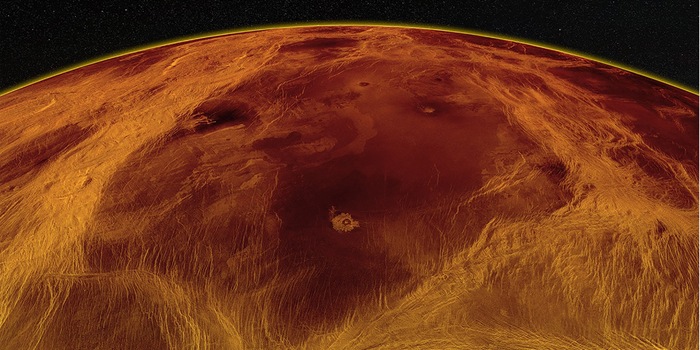
Things are moving on Venus
Like floes on a sea of ice, plates are pushing against each other on Venus’s surface. Until recently, researchers assumed that Earth’s neighbouring planet was geologically lifeless.
To date, it was believed that Earth was the only planet in the solar system with a crust of drifting plates. But now researchers led by Paul Byrne of North Carolina State University have calculated that parts of the crust on Venus are also slightly shifting. This changes the assumption that our hostile neighbouring planet has a largely rigid surface.
The scientists made these discoveries by analysing images from the Magellan orbiter. Between 1990 and 1994, the NASA probe mapped Venus’s surface using radar waves. As Byrne and his colleagues reported in «PNAS», the probe’s maps indicate that parts of Venus’s surface appear to be moving, colliding and rotating. From the data provided by the Magellan orbiter, the researchers deduced that the mantle inside Venus might be causing this type of tectonics. This activity is comparable to the so-called mantle convection on our planet – slow movements occurring in planet Earth’s solid but malleable mantle, probably resulting from temperature differences. However, the plates on Venus aren’t solid enough for one plate to push itself over another and dig itself into the crust (subduction), nor do they form mountain ranges during a collision.
Unlike Mars or other planets in our solar system, there has been little research on Venus, which is about the size of the Earth. But recently, NASA, ESA and the Russian space agency announced plans to fly missions to Venus in the late 2020s and early 2030s. Byrne and his team hope new images will then confirm their calculations.
Spektrum der Wissenschaft
We’re a partner of «Spektrum der Wissenschaft» (link in German) and strive to make scientific information better available to you. Follow Spektrum der Wissenschaft if you like the article.
Experts from science and research report on the latest findings in their fields – competent, authentic and comprehensible.